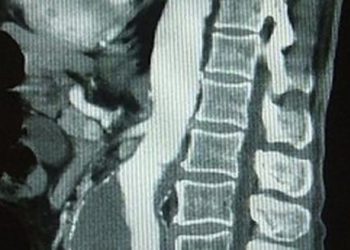Endovascular repair of AAA provides perioperative benefits but long-term survival similar to open repair
1. Patients who underwent endovascular repair of abdominal aortic aneurysms (AAA) had lower perioperative mortality than those who received an open repair.
2. After 4 years of follow up, survival curves of endovascular repair and open repair were similar.
Evidence Rating Level: 2 (Good)
Study Rundown: The rupture of an AAA can be fatal. Treatment focuses on repair of the vessel before a rupture occurs. The two methods of AAA repair are open repair and endovascular repair, the latter a relatively newer method first introduced in the 1990s. Previous studies comparing the two methods showed endovascular repair to be superior in the immediately postoperative period but long-term survival to be similar between the two methods.
Using Medicare data from 2001 to 2008, this study sought to compare the long-term outcomes of open repair to endovascular repair of AAAs. They found a significant benefit of endovascular repair in the perioperative period. This early benefit lasted until 3 years postoperative, at which time the mortality rate was similar in both groups. Late complications occurred less in patients who underwent open repair. Additionally, the authors found that over the course of 2001 to 2008, patients who received endovascular repair in the later years had fewer complications with the operation. The major limitation of this study is that it is retrospective observational in design and could not account for confounding factors and biases that led to selection of patients. In addition, the authors found that late ruptures occurred more in patients who received endovascular repair. Longer follow-ups will be needed to further investigate this, as more ruptures may occur with time.
Click to read the study, published today in NEJM
Relevant Reading: Endovascular versus Open Repair of Abdominal Aortic Aneurysm
In-Depth [retrospective cohort]: This study utilized Medicare data from 2001 to 2008 to include patients 67 years of age or older who underwent either endovascular repair or open repair of AAA. Patients were compared using propensity-score matching. They found that perioperative mortality was lower in the endovascular repair group as compared to open repair (1.6% versus 5.2%, p<0.001). Patients who received endovascular repair had a survival benefit until 3 years after surgery, after which survival was similar in both groups. With this early survival benefit, the mean survival at 4 years was 12.4 days longer in the endovascular group (p<0.001). For patients who underwent endovascular repair, mortality at 2 years post surgery was lower for patients who were treated in 2007 as compared to 2001 (14.6% versus 16.3%, p<0.001).
Image: PD
©2015 2 Minute Medicine, Inc. All rights reserved. No works may be reproduced without expressed written consent from 2 Minute Medicine, Inc. Inquire about licensing here. No article should be construed as medical advice and is not intended as such by the authors or by 2 Minute Medicine, Inc.








